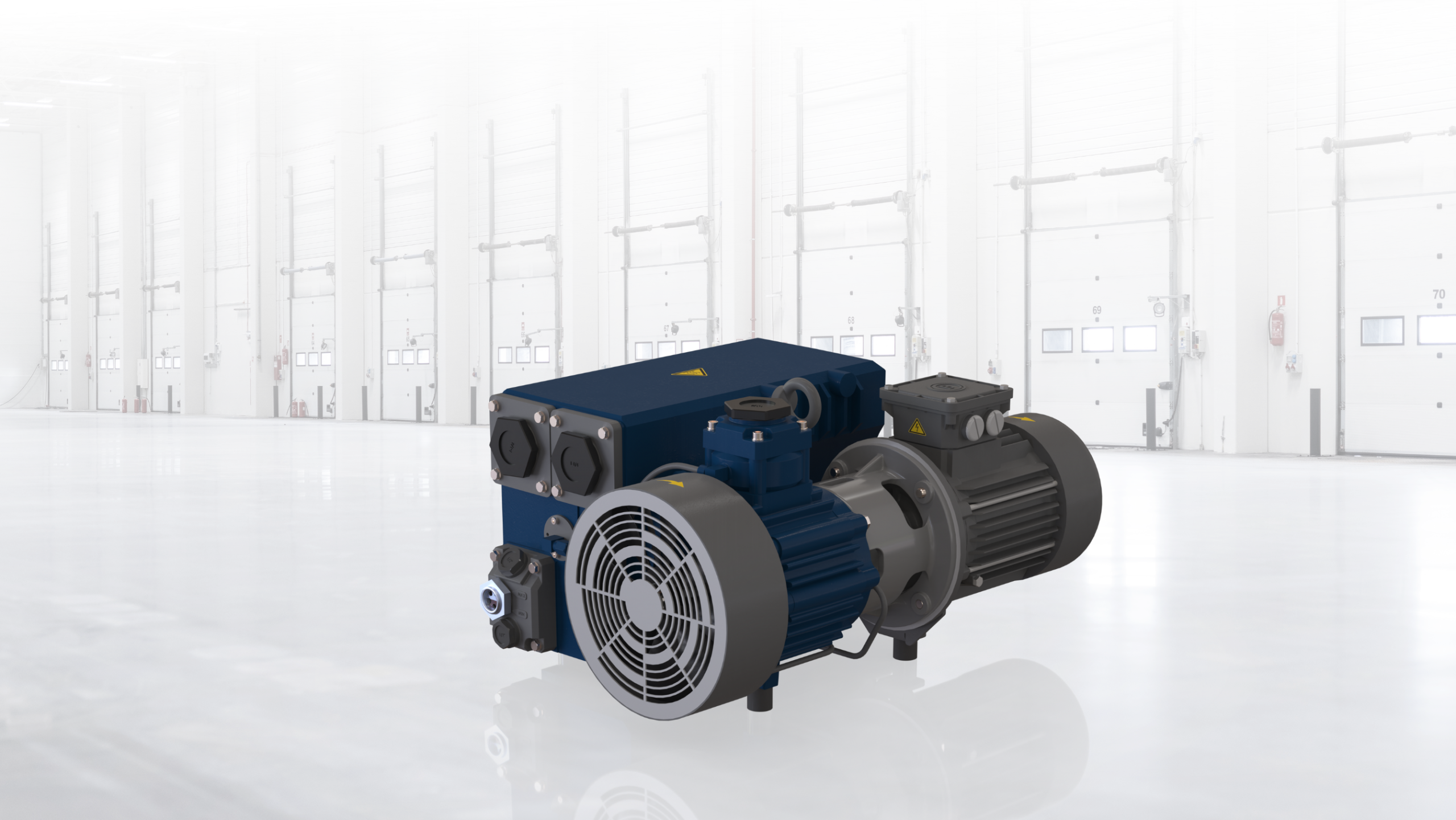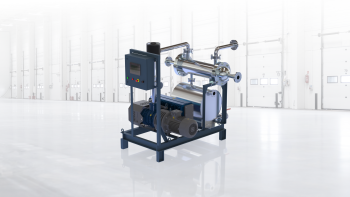Vacuum systems are amazing technological artefacts. The importance of these systems is such that they are used in all the major industries. They are used in manufacturing, scientific research, and almost all industries. But what are they really? This article will provide a definition of vacuum systems in simple terms. It will discuss their working, types, components, applications, and advantages. So, let’s start!
Understanding Vacuum Systems
Air or gas is extracted from a sealed space in a vacuum system. This leads to the creation of an environment of low pressure. In simpler terms, it is a system that removes air to make a “vacuum.” A complete vacuum implies the absence of any air or even particles in the space. But, in practice, most vacuum systems create a partial vacuum, meaning that some air or gas is still present, but at a very low pressure.
What is the usefulness of this? The low-pressure environment changes the properties of a material and its behaviour. Consequently, vacuum systems are of great importance in many applications. Their presence is felt in factories, laboratories, and even homes.
How Vacuum Systems Work
When it comes to vacuum systems, their basic dependence is on pumps. These pumps are responsible for the removal of air or gas from a chamber. The chamber is a confined area where a vacuum is established. The operation of pumps is such that they literally extract the air molecules. Thus, the pressure existing inside the chamber is lowered.
Pressure is quantified in various units such as pascal or torr. The atmospheric pressure at sea level is approximately 101,325 pascals. A vacuum system condenses this pressure. As the pressure decreases, the vacuum becomes more intense. Various systems set different criteria for the level of vacuum; for instance, some machines require only a moderate vacuum, while others need an extremely potent one.
A pump initiates the procedure. The pump exhausts the air inside the chamber. The pressure is tracked by sensors. The air or gas flow is managed by valves. The system also has filters as one of the components to protect it from contamination. These parts work together to form and keep the vacuum.
Types of Vacuum Systems
Each vacuum system has its own unique characteristics and is made in an array of different types. Nevertheless, every type comes with its own fitted application. Here is a breakdown of major types:
1. Low Vacuum Systems
The mild vacuum is what these systems produce. The pressure does not vary much from that of regular air, only slightly lower. They are suitable for less demanding applications. One of the everyday examples of low-vacuum systems is vacuum cleaners. They are responsible for collecting dust and dirt by means of sucking. The construction as well as maintenance of these systems is very simple.
2. Medium Vacuum Systems
Medium vacuum systems are the systems that are able to create strong vacuums. A larger volume of air is drawn out along with their use than with low-vacuum systems. These systems are widely used in the industrial sector. They are, for instance, used in food packaging where air removal prolongs food freshness. Medium vacuums are also applied in the case of chemical processing.
3. High-Vacuum Systems
You will find that high vacuum systems generate a very low pressure. Virtually no air remains in the chamber after this process. These are called advanced applications. For example, semiconductor manufacturing depends on these systems. A clean, air-free environment is a must when making computer chips which is indeed provided by high-vacuum systems.
4. Ultra-High Vacuum Systems
Among the vacuum systems, these are the ones which produce the strongest vacuums. Almost all air and gas particles are eliminated. Ultra-high vacuum systems are found in laboratories doing scientific research like in physics experiments as well as in space simulation chambers. The systems are quite complex and expensive.
Key Components of Vacuum Systems
Vacuum systems have several important parts. Each part plays a role in creating and maintaining the vacuum. Here are the main components:
1. Vacuum Pump
The pump is the heart of the system. It removes air from the chamber. There are different types of pumps. Some common ones include:
- Rotary Vane Pumps: These are used for low and medium vacuums. They are reliable and affordable.
- Diaphragm Pumps: These are quiet and good for small systems.
- Turbomolecular Pumps: These are used for high and ultra-high vacuums. They work at very high speeds.
- Cryogenic Pumps: These use cold temperatures to trap gas molecules. They are used in ultra-high vacuum systems.
2. Vacuum Chamber
The chamber is the sealed space where the vacuum is created. It is made of strong materials like stainless steel. The chamber must be airtight. Even a tiny leak can ruin the vacuum. Chambers come in different shapes and sizes. Some are small, like a jar. Others are large, like a room.
3. Valves
Valves control the flow of air or gas. They let air in or out of the chamber. They also isolate parts of the system. This helps maintain the vacuum. Common valves include gate valves and angle valves. They are made to handle low-pressure environments.
4. Gauges and Sensors
Gauges measure the pressure inside the chamber. They tell how strong the vacuum is. Sensors monitor other things, like temperature or gas levels. This information helps keep the system running smoothly.
5. Filters and Traps
Filters remove dust or particles from the air. Traps capture gases or vapours. These keep the system clean. A clean system works better and lasts longer.
Applications of Vacuum Systems
Vacuum systems are used in many fields. They help solve problems and improve processes. Here are some common applications:
1. Manufacturing
Factories use vacuum systems for many tasks. For example, they are used in coating processes. A vacuum helps apply thin layers of material to surfaces. This is used to make things like glass, tools, or electronics. Vacuum systems are also used in in-moulding. They help shape plastic or metal parts.
2. Food Industry
Vacuum systems are popular in food packaging. They remove air from packages. This keeps food fresh for longer. It also prevents bacterial growth. Vacuum-sealed food stays tasty and safe to eat.
3. Scientific Research
Scientists use vacuum systems in experiments. For example, they study particles in physics labs. A vacuum provides a clean environment. It prevents air from interfering with results. Vacuum systems are also used in chemistry and biology labs.
4. Medical Field
Hospitals and clinics use vacuum systems. They are used in equipment like MRI machines. They also help in sterilisation processes. A vacuum removes air and moisture. This makes it easier to clean medical tools.
5. Space Technology
Vacuum systems simulate space conditions. Space has no air, so it’s like a giant vacuum. Engineers use vacuum chambers to test satellites and spacecraft. This ensures they work in space.
6. Everyday Uses
Vacuum systems are not just for industries. They are used in homes, too. Vacuum cleaners are the most common example. They use a low vacuum to clean floors. Some kitchen appliances, like vacuum sealers, also use this technology.
Benefits of Vacuum Systems
Why are vacuum systems so popular? They offer many advantages. Here are some key benefits:
1. Cleaner Processes
A vacuum removes air and contaminants. This creates a clean environment. It’s perfect for tasks that need precision, like making electronics or conducting experiments.
2. Better Product Quality
Vacuum systems improve the quality of products. For example, vacuum coating makes surfaces smoother and stronger. Vacuum packaging keeps food fresh longer.
3. Energy Efficiency
Some vacuum systems save energy. Modern pumps use less power. This reduces costs for businesses and homes.
4. Versatility
Vacuum systems work in many industries. From food to space, they solve different problems. This makes them very versatile.
5. Safety
Vacuum systems can make processes safer. For example, they reduce the risk of chemical reactions in labs. They also prevent contamination in medical settings.
Challenges of Vacuum Systems
Vacuum systems are not perfect. They have some challenges. Understanding these helps us use them better.
1. Cost
High and ultra-high vacuum systems are expensive. The pumps and chambers cost a lot. Maintenance also adds to the cost.
2. Complexity
Some vacuum systems are complex. They need skilled people to operate them. Training workers takes time and money.
3. Maintenance
Vacuum systems need regular care. Pumps must be cleaned. Leaks must be fixed. If not maintained, the system fails.
4. Energy Use
While some systems save energy, others use a lot. High vacuum pumps need more power. This can increase costs.
Choosing the Right Vacuum System
Selecting a vacuum system depends on the task. Here are some tips to choose the right one:
- Know the Vacuum Level Needed: A Low vacuum is enough for simple tasks. High or ultra-high vacuums are for advanced applications.
- Consider the Budget: Basic systems are cheaper. Complex systems cost more but offer better performance.
- Check the Application: Food packaging needs a different system than semiconductor manufacturing.
- Think About Maintenance: Choose a system that’s easy to maintain. This saves time and money.
- Look at Size: The system must fit the available space. Small systems work for labs. Large ones are for factories.
Future of Vacuum Systems
The vacuum field is transforming. New varieties of pumps have been developed for commercial and industrial applications that are more power-efficient than the previous ones. They use less energy to generate stronger vacuums. The materials for the chambers are gradually making big strides. They are not only stronger but also more leak-proof. Automation has also been a significant factor in the transformation of the vacuum systems. The smart sensors, along with the controls, are making the vacuum systems more user-friendly.
Vacuum systems are likely to be used extensively in the future. They will be put to use in the fields of the future,r e like, for example, renewable energy. To illustrate, they could be instrumental in solar panel and battery manufacturing. Additionally, they will be miniaturised and become less expensive. This price reduction will lead to a larger consumer base.
Conclusion
Vacuum systems are powerful appliances. They create low-pressure environments by sucking out air. This is advantageous not only for but also for scientific research, medicine, and other fields. They have penetrated the market from vacuum cleaners to space-testing devices and are widely used in manufacturing processes. Their use leads to product quality improvement, safety assurance, and energy savings. However, they have some challenges too, like maintenance and cost, among others.






